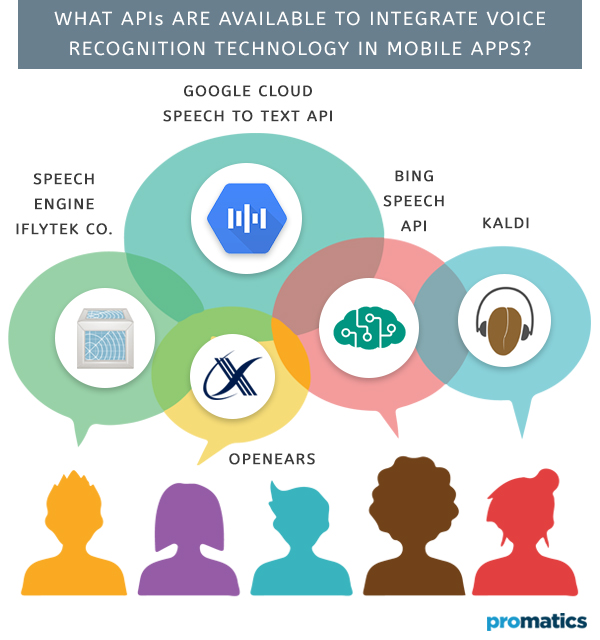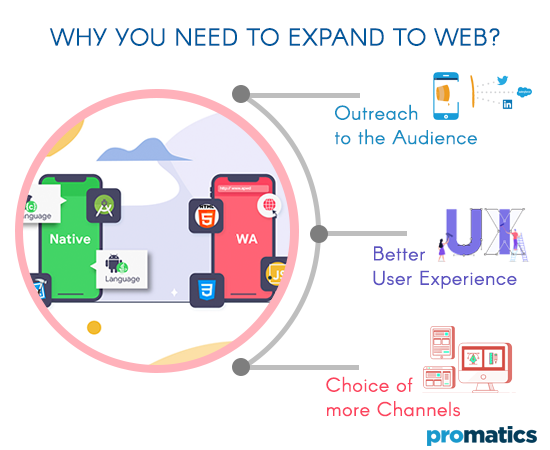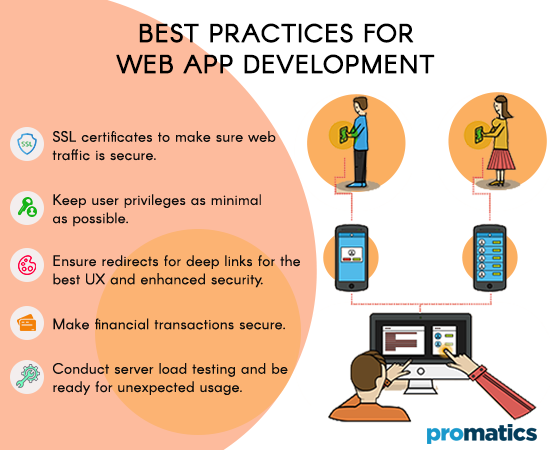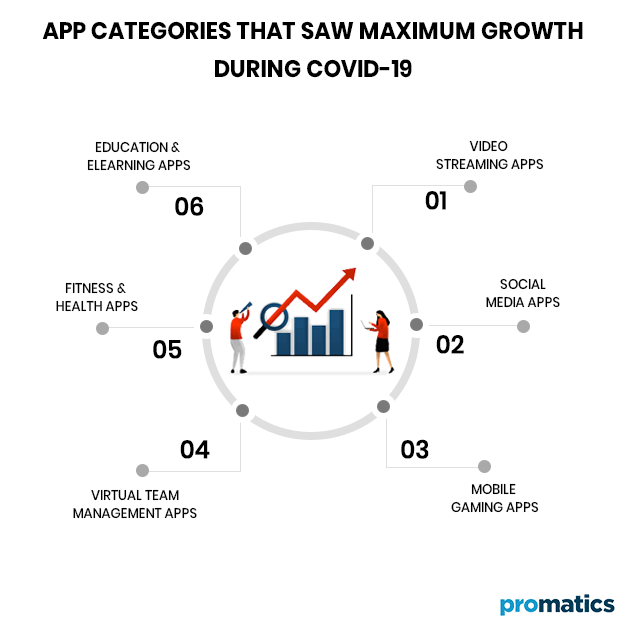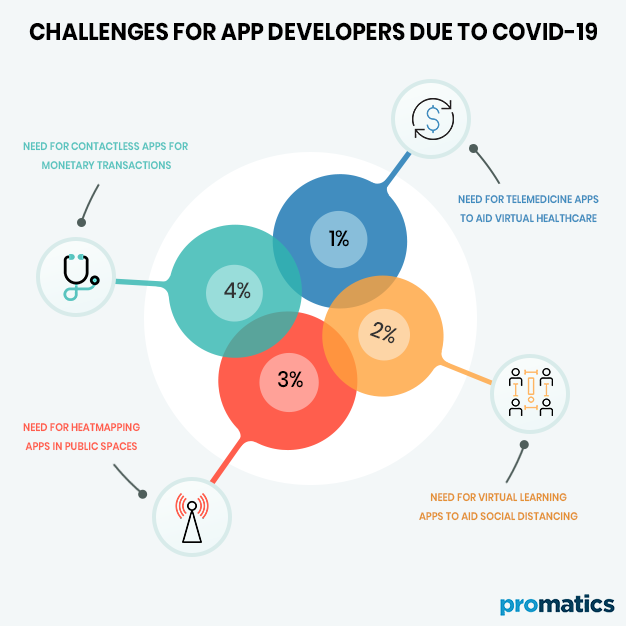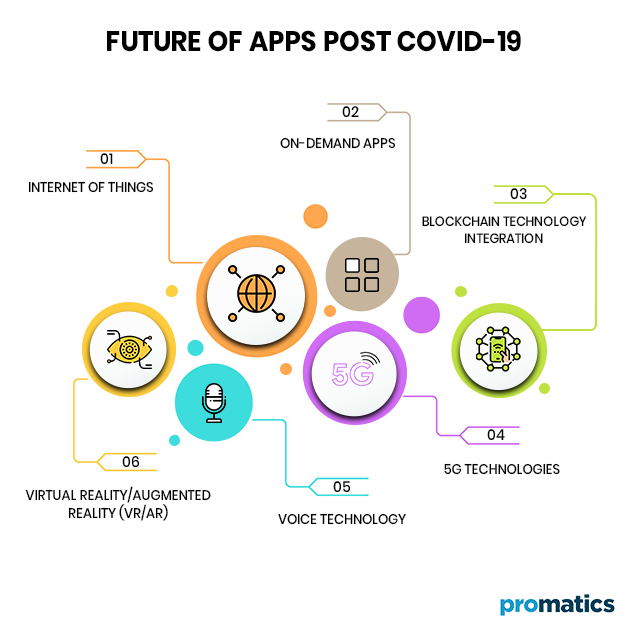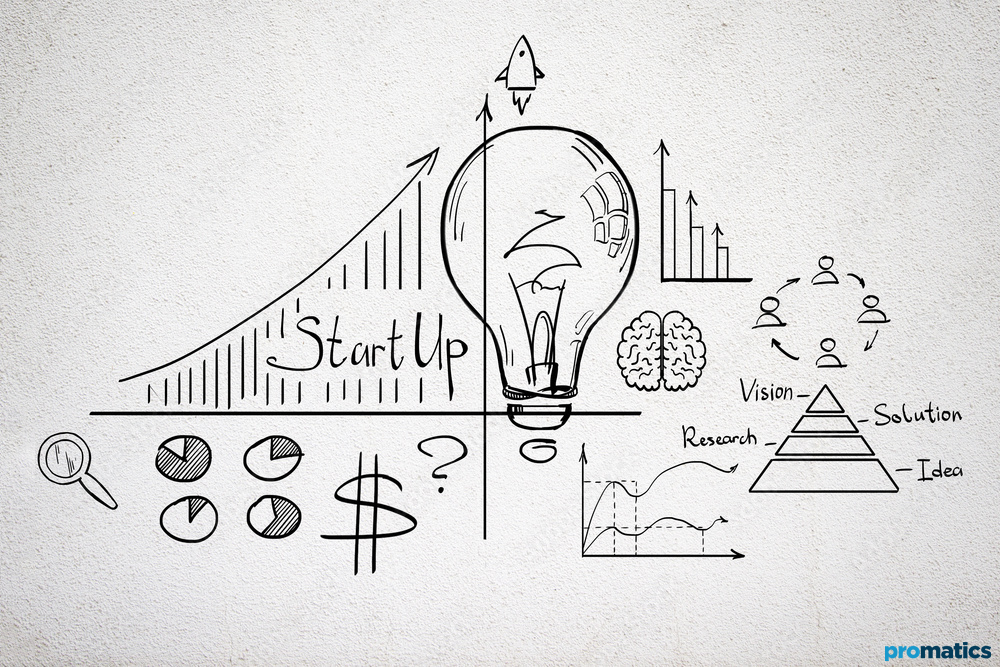A website is a powerful asset, especially for business owners and entrepreneurs. It helps you showcase your brand and provide a cost-effective communication tool. A website gives your customers an opportunity to access your site from their laptops, desktops and handheld devices. However, there is a dramatic change in the pattern. Today, many customers are showing interest in viewing information from mobile phones and tablets, rather than desktops and laptops. Smartphones are providing an incredible advantage for users and businesses.
To stay updated with increasing growth of mobile devices, companies moved to mobile responsive websites initially. These sites improved user experience by improving the user interface. Responsive websites are usually accessed by mobile users who do not take advantage of their smartphones. Some of the advantages include – push notifications, offline access, GPS, camera etc. To take advantage of these features, large businesses have invested in building native apps.
In a study, it was found that people spend nearly 9 times more in mobile apps than in a browser. More than 83% of marketers claim that mobile apps are an important part of their marketing strategy. More than 90% of people are likely to spend their time on mobile apps, while 10% people prefer websites. From this statistics, we can say that companies and business owners should shift their focus from websites to mobile apps.
Benefits of turning your website into a mobile app
Developing both the mobile app and responsive website can be a bit expensive. You might choose one of the two channels, depending on your business goals. Though both these channels have their own pros and cons, developing a mobile app for your business can help you get higher conversions.
A mobile app is a software product that has to be downloaded from App Store. It is closely related to hardware of your device such as – camera, microphone, accelerometer etc. It provides users with a better experience by giving them access to the camera, geolocation, photo library etc.
As mobile apps are growing at an astounding rate, turning your website into mobile app gives an added advantage. Here are some compelling reasons why you need to turn your website into a mobile app.
- Ease of access
Mobile apps can be accessed easily, as they always in the hands of your customers. As soon as your customer downloads the app, it is on their phone and reminds them of your business constantly. You are just one-click away for them to call you and set an appointment.
On the contrary, a website can’t be accessed as easily as mobile apps. Apps eliminate the need to remember or take time to enter the URL of your business.
- Increase user engagement
Mobile apps allow you to send messages in a timely manner to your customers. Whether it is in the form of coupons, special product offerings, promotions or any updates – you can inform your customers directly. It is no wonder who big brands love mobile apps.
Push notifications are the best features of mobile apps, as they are likely to get 18% more click-through-rate than mobile apps. You can include a link to your advertisement or add a shopping cart to the push notifications.
- Gain customer loyalty
It is a known fact that customers love discount coupons, deal and promotional offers. Mobile apps allow you to gain customer loyalty by giving them special offers and discounts. Apps make it easier for you to keep the customers engaged.
It is always a better option to maintain existing customers rather than making new customers. Companies can make this possible by having a mobile app, rather than a website.
- Future technology
There has been a great advancement in technology in recent years. Smartphones can be said as the present and future of technology, as a result of which more and more apps are likely to emerge into the market. Mobile apps are not an option, but mandatory for smartphone users.
From tracking your fitness goals to reading news, everything happens in smartphone apps. More than 70% of people across the globe are using smartphones and this figure is likely to increase soon.
- Personalized experience
Mobile apps offer a personalized experience which most of the users love about. All the confidential data and personal information are stored on the individual’s phone with login credentials and data settings. Mobile apps allow users to track and remember their interaction, allowing them to maximize their experience. This will eventually increase their interest in your brand.
A mobile app is quite different from the website, giving a new branding experience to the users. Companies can experiment with new branding styles for the app, which can be different from regular brand style.
- Mobile apps are fast
Mobile apps can load faster than websites. A well designed mobile app takes less time to perform actions than a website. Apps usually store data on the devices, which websites use web servers to store data. For this reason, data can be retrieved at a fast rate in mobile apps.
Apps can even save users time by storing their personal preferences and using them to take proactive actions on the behalf of users. Whenever you open up a website it first requests the host server to send any information. This is not the case with apps.
Conclusion
If you have to choose between investing in a mobile app or website, we would suggest you invest in the mobile app. Even though the website is mobile responsive, it is better to choose a mobile app over a responsive website. Though mobile responsive websites have a great advantage, they cannot replace a native app.
The reason behind this is that mobile responsive websites make the website look much better on small screen devices. Your website can adjust itself to the requirements of the screen. However, it is not an application and hence does not match the performance of a mobile app.
Websites and mobile apps share different UI and UX. It related to many factors like – interface, navigation, object placement and context. If you want to turn your website into a mobile app, you must adhere to the principles of mobile UX.
With affordable app development resources, there is no excuse to remain app-free. You should be ready for the next step, as a mobile app can increase your conversions to a great extent.
If your brand does not have a mobile app, it’s the right time to get started! Contact us today to get expert advice straight into your inbox.




